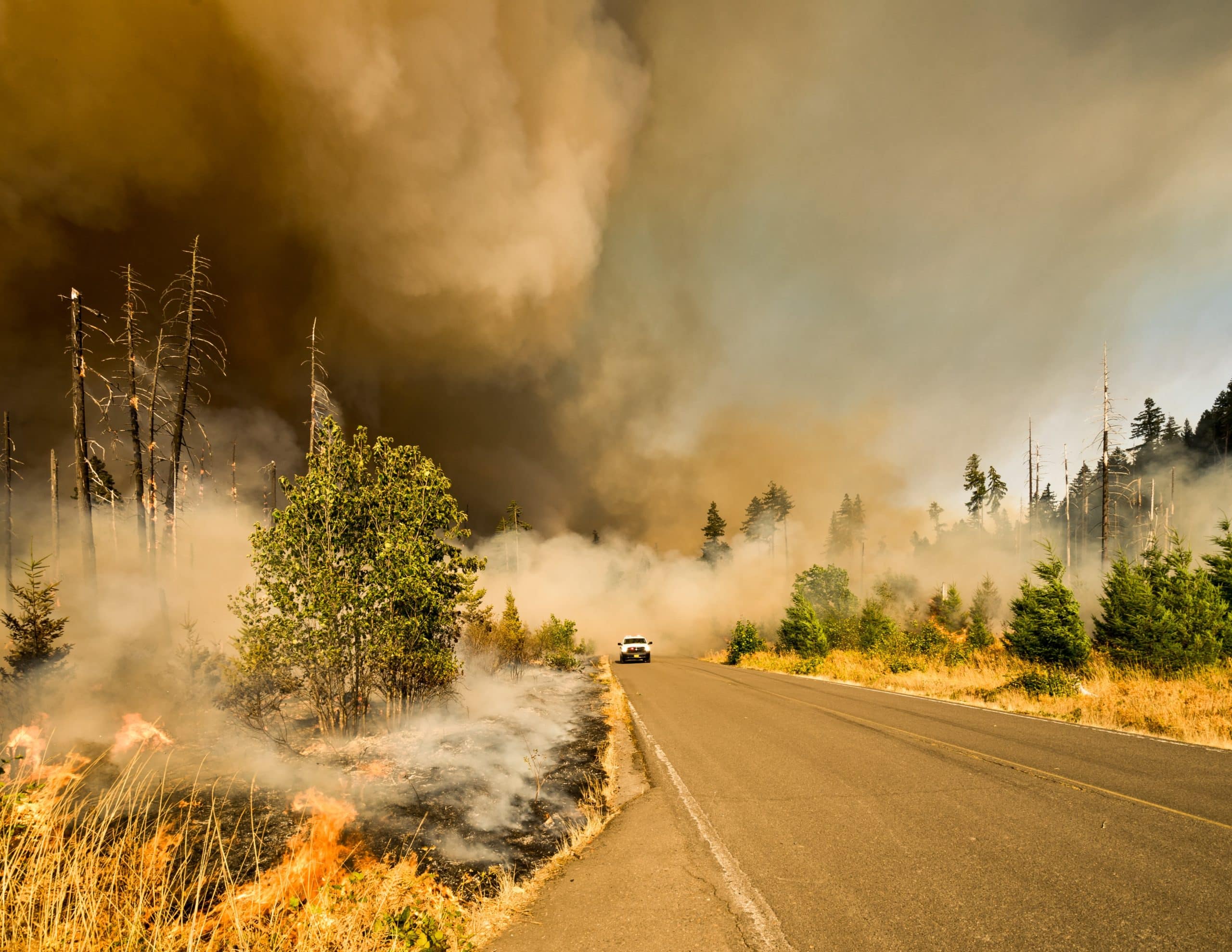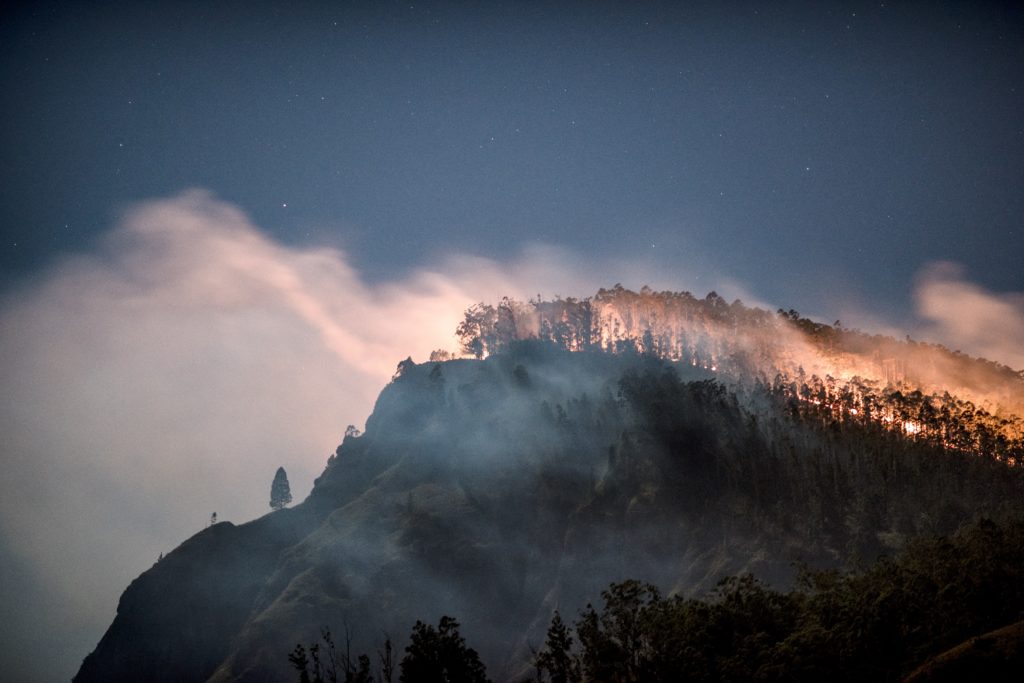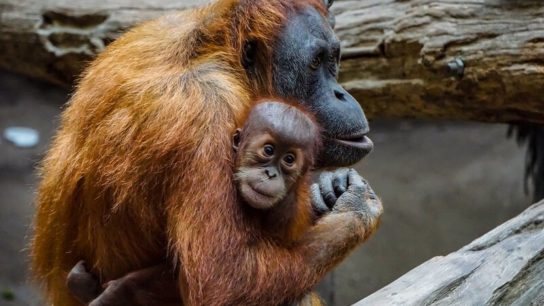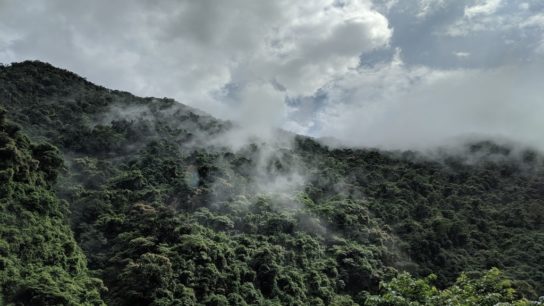Since 2000, the US has experienced an average of 70,600 wildfires annually. Although these events affect people’s lives and the economy, the environmental impact of wildfires is also significant. Billions of dollars and thousands of cleanup crews strive to restore ecosystems and safeguard natural resources in the aftermath of a wildfire. Here are the most critical environmental impacts of fires and how we can prevent them.
—
The Impact of Wildfires on the Environment
1. Polluted Water Resources
Forested water bodies account for 80% of the United State’s freshwater recourses and 3,400 public drinking-water systems derive from watersheds within national forests. With each wildfire, watersheds grow more vulnerable to stormwater runoff and erosion.
Following a wildfire, the soil’s capacity to absorb water is significantly compromised – a concerning outcome in the event of post-fire flooding. Watersheds may retain higher levels of nitrogen and dissolved carbon dioxide for 15 years after a wildfire, reducing drinking water quality within surrounding communities.
In addition, elevated nitrogen and phosphorus from burned vegetation result in harmful algae blooms. Eating shellfish contaminated with toxic algae could result in paralysis or even death, while other people may experience severe vomiting, seizures, or diarrhoea.
There needs to be increased effort in water pollution cleanup following a wildfire. Current research is focussing on finding ways to test and recover water systems.
You might also like: Causes of Water Pollution And How We Can Reduce It
2. Vegetation
Unfortunately, the loss of vegetation can significantly alter an ecosystem by increasing erosion, reducing nutrient availability in the soil, and posing a heightened risk for disease and pest infestations. In turn, these may prolong regrowth or impact what grows in the area affected by the fire. Additionally, vegetation that once served as a habitat may threaten wildlife survivability.

Photo by Joanne Francis on Unsplash
Forest vegetation can absorb 7.6 billion metric tons of carbon dioxide annually, making it vital to protect one of the world’s largest carbon sinks from further destruction.
Cleanup efforts for vegetation mainly focus on the areas less likely to recover from a wildfire. Rehabilitation often takes a year but can often last longer, especially in areas that are frequently subject to wildfires.
3. Endangered Wildlife
Naturally, impaired water and land have dire effects on wildlife. The subsequent consequences are critical to natural selection.
Wildfire effects on herbivores such as grazing mammals and insects are particularly troubling, especially since the latter drive essential ecosystem functions such as nutrient cycling and pollination.
Studies suggest wildfire pollutants in water bodies also suppress wildlife immunity, making animals more susceptible to disease, declining health, and higher mortality.
In 2020, scientists discovered a link between the 7.8 million acres burned and a mass migratory bird die-off in Colorado around the same time. The study found toxic air particles from wildfires were a contributing factor.
While some wildlife species benefit from controlled burns, many lose their homes and food in a wildfire. Cleanup efforts may entail relocating animals to shelters or zoos before releasing them into a healthy habitat — especially if the fire injured them.
4. Air Quality
Wildfires release carbon dioxide and their emissions can prove to be significantly high. For perspective, wildfires emitted 91 million metric tons of carbon dioxide in California in 2020 – 30 million more than the state’s power production emits on an annual basis.

Photo by Marcus Kauffman on Unsplash
Particles from smoke and the burning of hazardous chemicals can also travel long distances, further reducing air quality and bearing multiple respiratory and cardiovascular ailments for humans and wildlife.
You can take a few actions to refresh the air in closed spaces following a wildfire. If there are still contaminants outside, you should wear a mask until it is deemed safe. Unfortunately, purifying outdoor air is much more challenging.
How to Prevent Wildfires
Natural disasters – including wildfires – cost the US an average US$31.5 billion in damages. However, future fire events are somewhat preventable.
According to the US National Interagency Fire Center, humans cause 87% of wildfires yearly, usually after leaving campfires unattended, discarding lit cigarettes, and committing arson.
Fortunately, you can help prevent wildfires in the following ways:
- Avoid lighting fires in dry, hot, and windy weather conditions.
- Construct campfires in open areas away from vegetation and extinguish them thoroughly.
- Avoid driving over dry, grassy areas as vehicle exhaust may spark a flame.
- Ensure vehicles and outdoor equipment are working correctly.
- Find alternatives to gender reveal or other celebratory devices that create sparks.
- Don’t light fireworks in dry and unsafe outdoor conditions.
- Keep water nearby if you plan to burn leaves and debris on your property.
Preventing Wildfires Can Save the Environment
Although not all wildfires are harmful, uncontrolled fires are a recipe for disaster. Use caution and take preventative care when handling fire to save the environment.
Featured image by Norman Meyer on Unsplash
You might also like: Top 12 Largest Wildfires in History













